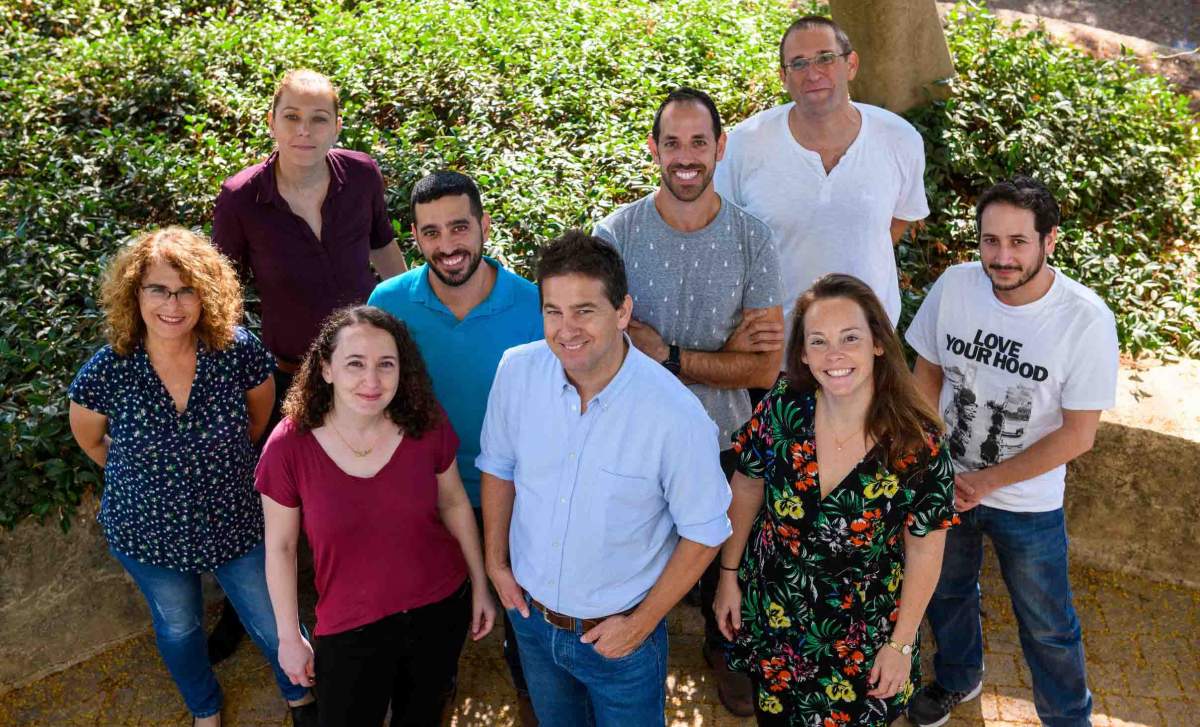Q & A with Prof. Eran Hornstein on discovering why mutations in a gene for a tiny non-coding RNA could herald the onset of neurodegenerative disease

Prof. Eran Hornstein
Q. How do you identify genes that are relevant to disease?
A: The disease that is studied in my lab, ALS, is a neurodegenerative state of the human motor system. The accepted view is that there are genetic causes for ALS. However, the most frequent cause is not in a gene that codes for protein, but rather in a non-coding gene in which a sequence gets repeated again and again. To identify new genes that might be involved, we often apply powerful ’Genome Wide Studies’ to look for any pattern that might stand out in association with the disease. But in this particular case our approach had a unique focus: Rather than looking for genes directly related to the disease, we identified those that are expressed only in motor neurons, that is, they are highly specific to the cell type affected by the disease.
Q: In other words, you started by asking why ALS only affects motor neurons?
A: Yes. ALS is a neurodegenerative disease that attacks motor neurons. So, if we could identify genes that are expressed only in these particular neurons, we might be able to get a lead on the cause of this disease. This approach turned out to be very successful.
Q: What did you discover about the genes for motor neuron identity?
If we could identify genes that are expressed only in these particular neurons, we might be able to get a lead on the cause of this disease
A: Once we identified a particular gene that looked interesting, we began to work backwards. This gene interested us, among other things, because it does not encode the instructions for making proteins. Such noncoding RNA, which appears in very short strands, is also called microRNA or miR — in this case, a miR known as miR-218. These short strands are regulatory: They turn up or down gene expression and the protein-making process at various stages.
Q: So you discovered this miR that is expressed only in motor neurons. How does that tie into the disease?
A: Many diseases appear to be tied to miR regulation, and we were not surprised to find it in this instance.
In the new study, which was recently reported in Science Translational Medicine, we worked on tissue from human ALS patients and we succeeded in showing that there is a drop in miR-218 expression in these patients, compared to healthy individuals. That was a strong clue that miR-218 plays a role in the disease – a clue that encouraged us to investigate further.
Often, mutations are involved in the development of disease, and therefore we asked if we can find mutations in miR-218 and how such mutations might affects miR-218 activity. We indeed discovered mutations in miR-218 that were unknown before, and we later understood, by performing more research, that these mutations in the gene for miR-218 make it less attractive to Dicer, a protein that is necessary for the activation of microRNAs. Dicer activity also drops in the motor neuron as a whole, probably as a result of the cell’s aberrant metabolism. We are thinking about a two-hit model for the repression of miR-218 in ALS: A decrease in the ability to attract Dicer as well as less Dicer to be attracted. When miR-218 is repressed, it does not perform its function sufficiently well. What we have found is that there are dozens of target messenger RNAs that should be normally controlled by miR-218 and yet in ALS these targets are dysregulated, as consequence of the loss of the tiny miR-218.
Q: Did you discover what miR-218 does in our healthy motor neurons, and what goes wrong in ALS?
A: We discovered that miR-218 plays a crucial role in a very important characteristic of motor neurons: setting their electric properties. Electricity is the way neurons pass messages on to the muscles – and we know that this is an important function that is impaired in ALS. We have evidence that miR-218 regulates the neuronal network activity. It does this by regulating the proteins responsible for opening and closing the channels in the nerve cell that move charged ions from one place to another. We think that a lower-than-normal level of miR-218 is connected to impaired motor neuron function and this is something that worsens with aging.

Front (l-r): Dr. Tsviya Olender, Dr. Irit Reichenstein, Prof. Eran Hornstein, Chen Eitan and Aviad Siany. Back (l-r): Dr. Beata Toth Cohen, Amitai Mandelbaum, Eran Yanowski and Dr. Iddo Magen
Q: How do you intend to address the remaining open questions about miR-218 involvement in ALS?
A: The first thing we will do is to create mice with the genetic mutations we discovered, and see if they develop the disease. We can then use these mice to explore further issues, for example, whether there are any symptoms of the disease that appear before onset of muscle weakness.
Q: How will this research affect the way the disease is diagnosed and treated?
A: Currently there is no cure for ALS, and the available treatments usually do little to slow its progression throughout the body. In the study, we measured miR-218 levels in the brain and spinal cord, but we hope to develop a means of detecting its level in blood or other routine clinical tests, so that the disease can be diagnosed early. It is even possible that miR-218 could be administered in the future as replacement therapy, to prevent nerve damage or even restore nerve function.
Prof. Eran Hornstein is Head of the Nella and Leon Benoziyo Center for Neurological Diseases; his research is also supported by Edward and Janie Moravitz. Prof. Hornstein is the incumbent of the Mondry Family Professorial Chair.

Recent Comments